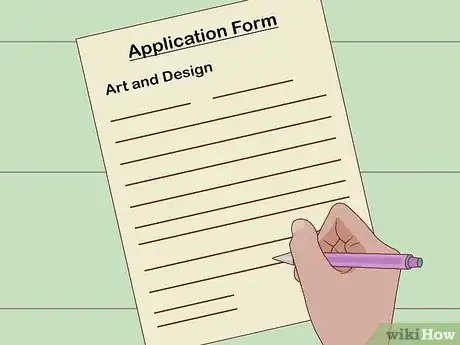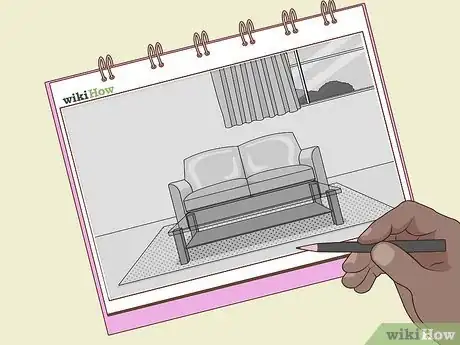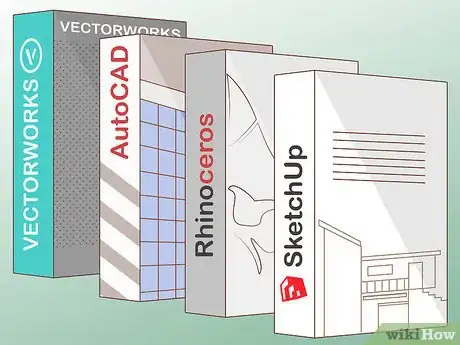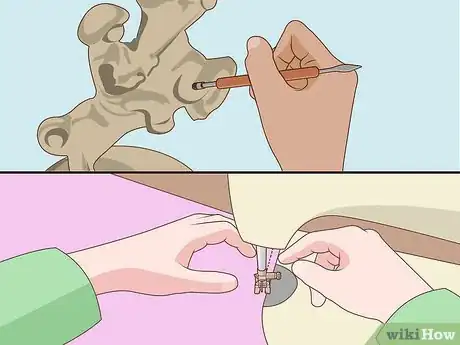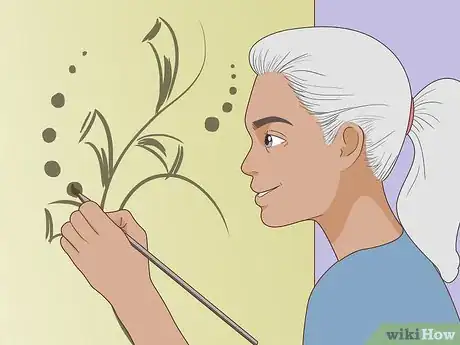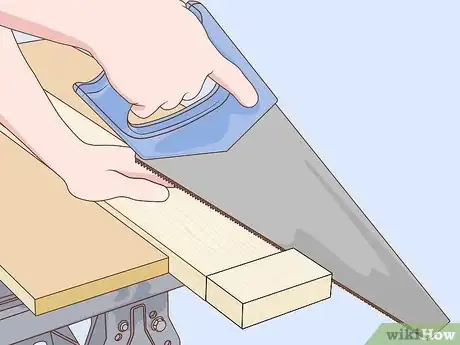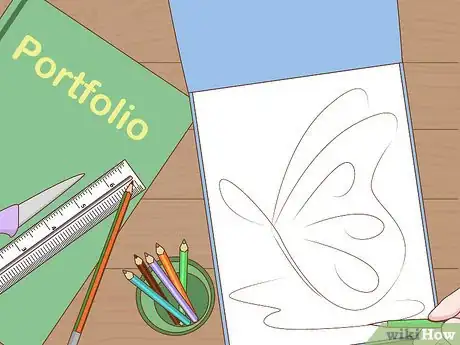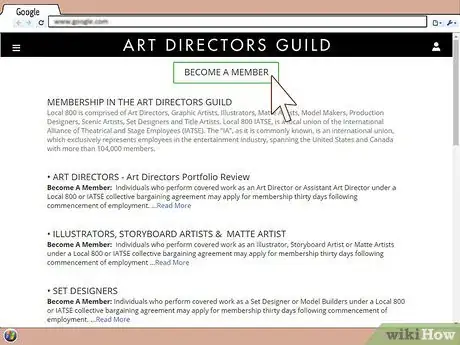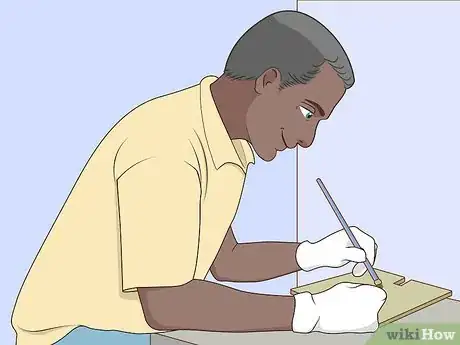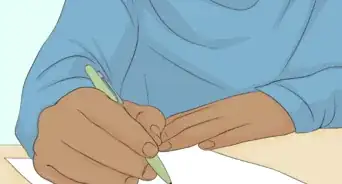This article was co-authored by wikiHow Staff. Our trained team of editors and researchers validate articles for accuracy and comprehensiveness. wikiHow's Content Management Team carefully monitors the work from our editorial staff to ensure that each article is backed by trusted research and meets our high quality standards.
There are 10 references cited in this article, which can be found at the bottom of the page.
This article has been viewed 89,212 times.
Learn more...
Set designers are responsible for imagining and building the physical surroundings of a scene in film, television and theatrical stage productions. Becoming a set designer requires a keen eye for detail and the ability to give birth to ideas using a variety of artistic mediums. Once you’ve made up your mind to pursue set design, you can begin building the skills and experience you’ll need to put together sets that lend authentic character to a production.
Steps
Developing Your Skillset
-
1Study art and design. Go to school to receive formal education in the arts. Focus on traditional disciplines like drawing and painting. While it’s not necessary to have a degree to work as a set designer, it will help you round out your skills and give you an edge when it comes time to compete for jobs.[1]
- Art classes will teach you fundamental principles like dimension, focus and composition.
- Design institutes and specialized film and theater programs are an alternative to universities and art schools.[2]
-
2Sketch out your ideas. Practice fleshing out concepts on paper. They’ll act as blueprints for the later phases of the design process. As you draw, consider how each element of your sketch could be brought to life using basic materials and effects.[3]
- Get in the habit of picking up your sketchbook whenever ideas come to you.
- For a set designer, it’s just as important to be creative and versatile as it is to possess strong technical skills.[4]
Advertisement -
3Learn to use computer-based design software. Set design has traditionally been done with pencil and paper. However, more and more professionals have switched to sophisticated design software in recent years. Study programs like AutoCAD, VectorWorks, Rhino and SketchUp to take advantage of the power and convenience that technology can offer.[5]
- Many television and film studios will expect you to know how to use design software when working on major projects.[6]
- Computer programs will allow you to create visual renderings of your ideas much faster and in greater detail than drawing by hand.
-
4Work with other mediums. In additional to traditional art and computer-aided drawing skills, it will help to be competent in other types of visual design, such as basic carpentry, sculpting and sewing. Each of these disciplines plays a vital role in set design and will come into the picture sooner or later.[7]
- Being a jack-of-all-trades will help open up more opportunities for you.
Gaining Experience
-
1Begin working on small productions. Volunteer to help create sets for your school or local theater company. This will give you your first taste of what it’s like to be part of a crew. Lend a hand with as many projects as you can to get more comfortable working under time and budget constraints.[8]
- You may not be able to actually design sets yourself on your first few productions. However, even tasks like painting backdrops or creating props will offer you a valuable glimpse into what goes into establishing a scene.
- If your interests lie in film and television, trying getting involved in the production of independent films being made in your area.[9]
-
2Take on other jobs and responsibilities. Spend some time working in a related position as a propmaker’s assistant, carpenter, runner. There’s typically a lot of coordination between production designers and these other staffers, so pulling double duty can be a good way to pad your resume and familiarize yourself with other aspects of the business.[10]
- Working on set in another capacity is also a good way to ensure that you’re able to make a living, since set designer jobs can sometimes be scarce.[11]
-
3Build a portfolio. Put together a collection of your best work. Your portfolio can include concept art in the form of sketches or computer-aided design printouts, along with photographs of finished work. A well-curated portfolio will act as a visual resume when you offer your services to big studio or theater productions.[12]
- Having a digital or online portfolio as well as physical samples will make it easier to get more eyes on your work.[13]
- Be sure to include any special titles or distinctions you’ve earned along the way, such as an art director credit for an independent film.
Perfecting Your Craft
-
1Read and analyze scripts. Get ahold of the scripts for the productions you’re working on as early as possible and break them down scene-by-scene. Don’t hesitate to ask for clarification for even the smallest details. While you’re making your way through the script, the gears will start turning and you’ll begin formulating ideas for how to turn fantasy into reality.
- A good set designer will need to collaborate closely with the writer, director and art department in order to arrive at a specific vision for a scene.[14]
- The more time you spend dissecting a script or treatment, the more fully you’ll be able to develop your ideas by the time production kicks off.
-
2Define the purpose of a set. Realizing a finished set begins with understanding the needs of the story. Always be asking yourself questions like, “What is going on in this scene?” “What is the exact setting and time period?” and “How does this character live?” Key considerations like these will help you create a set that serves as a believable snapshot of a particular place and time.[15]
- The set is a vital part of any scene. Think about the ways the characters will interact with it and what central features should attract the audience's attention.
- A character’s style, personality and motivations can give you clues as to how best to shape their surroundings.
-
3Join a set designer’s guild. Membership in a guild or union comes with privileges like competitive salaries and benefits and networking with prominent important industry figures. It could also prove to be job security in the long run, since credentialed professionals tend to get looked at first for jobs.[16]
- Some of the more major groups you could join include the Art Director’s Guild, United Scenic Artists and The American Association of Community Theater.
- There may be mandatory fees or meetings associated with being an active member of a professional guilds.
-
4Be willing to work hard. Being a set designer is often a tireless job. You’ll have strict standards and deadlines imposed on you, and there will be times when you’ll have to labor around the clock in order to get a production finished. Make sure you’re up to the task before taking on these challenges.
- Nights, weekends and overtime are regular occurrences in the fast-paced profession.[17]
- When things get tough, keep in mind what drew you to the field in the first place. Your passion will help carry you through.
Community Q&A
-
QuestionDo I have to go to college to become a set designer?
 Community AnswerA formal education is not a necessity to become a set or production designer, but it will be a big help. Traditional art classes will teach you essential design skills, which you'll use every day on set. Having a degree might also help you looked at for job or apprenticeship opportunities.
Community AnswerA formal education is not a necessity to become a set or production designer, but it will be a big help. Traditional art classes will teach you essential design skills, which you'll use every day on set. Having a degree might also help you looked at for job or apprenticeship opportunities.
Warnings
- You may have to spend months or even years performing administrative duties like making coffee, cleaning the set and delivering documents before you’re given a bigger role in the production process.⧼thumbs_response⧽
References
- ↑ https://bigfuture.collegeboard.org/careers/arts-visualand-performing-set-designers
- ↑ http://creativeskillset.org/job_roles/3083_set_decorator_assistant_set_decorator
- ↑ https://www.ucas.com/ucas/after-gcses/find-career-ideas/explore-jobs/job-profile/set-designer
- ↑ https://www.theguardian.com/money/2014/mar/06/how-become-set-designer
- ↑ http://www.setdesigner.biz/code/set_des2.shtml
- ↑ https://www.princetonreview.com/careers/225/set-designer
- ↑ http://www.academicinvest.com/arts-careers/fine-arts-careers/how-to-become-a-set-designer
- ↑ https://bigfuture.collegeboard.org/careers/arts-visualand-performing-set-designers
- ↑ https://www.ucas.com/ucas/after-gcses/find-career-ideas/explore-jobs/job-profile/set-designer
- ↑ https://www.ucas.com/ucas/after-gcses/find-career-ideas/explore-jobs/job-profile/set-designer
- ↑ http://www.setdesigner.biz/code/set_des2.shtml
- ↑ http://www.careerigniter.com/careers/set-designer/
- ↑ https://nationalcareersservice.direct.gov.uk/job-profiles/set-designer
- ↑ http://www.academicinvest.com/arts-careers/fine-arts-careers/how-to-become-a-set-designer
- ↑ https://www.theguardian.com/money/2014/mar/06/how-become-set-designer
- ↑ https://www.dga.org/Resources/Additional/Guilds-and-Unions.aspx
- ↑ http://www.academicinvest.com/arts-careers/fine-arts-careers/how-to-become-a-set-designer
About This Article
To become a set designer, start by studying art and design either in school or in specialized design programs. Next, sketch out your ideas as well as use computer-based design software to keep up with current trends. Additionally, learn to work in other mediums, such as sculpting, sewing, and carpentry. Once you’re ready to gain some real experience, volunteer on small productions or offer to work as a carpenter or propmaker as you build your portfolio. To learn how to join a set designer’s guild, keep reading!
